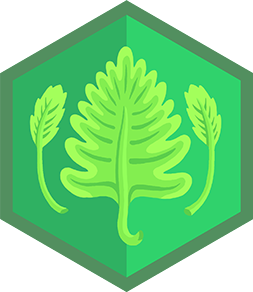Which Berries Are Really Berries?
Investigate common fruits by observing and dissecting strawberries, raspberries, blueberries, bananas, and tomatoes to learn which are true botanical berries with adult help.



Step-by-step guide to determine which berries are really berries
Step 1
Wash your hands and gently rinse all the fruits under cool water.
Step 2
Put each fruit on its own paper plate so they do not touch.
Step 3
Write each fruit’s name on the edge of its plate with your pencil.
Step 4
Ask an adult to tell you the botanical definition of a “true berry” or read it together.
Step 5
Use the magnifying glass to look closely at the outside of each fruit.
Step 6
With adult help cut each fruit in half lengthwise on the cutting board.
Step 7
Inspect the inside of the strawberry with the magnifying glass.
Step 8
Inspect the inside of the raspberry with the magnifying glass.
Step 9
Inspect the inside of the blueberry with the magnifying glass.
Step 10
Inspect the inside of the banana with the magnifying glass.
Step 11
Inspect the inside of the tomato with the magnifying glass.
Step 12
On your paper write which fruits had seeds on the outside and which had seeds inside.
Step 13
Use your notes and the berry definition to decide which fruits are true botanical berries.
Step 14
Draw a small chart or picture with colours showing which fruits are true berries and which are not.
Step 15
Take a photo or describe your finished chart and share your discovery on DIY.org.
Final steps
You're almost there! Complete all the steps, bring your creation to life, post it, and conquer the challenge!


Help!?
What can we use if we don't have a magnifying glass or paper plates?
Use a smartphone camera in macro mode or a handheld reading magnifier instead of the magnifying glass, and put fruits on clean paper towels or separate sections of a large plate while still writing each fruit's name with your pencil.
My raspberries and strawberries got crushed when we tried to cut them—what should we do?
Chill delicate fruits first and ask an adult to slice them on the cutting board with a sharp knife or kitchen scissors, or gently split them with fingers while using the magnifying glass to inspect the inside so the seeds stay visible.
How can I adapt this activity for a 3-year-old, a 7-year-old, and a 12-year-old?
For a 3-year-old let them wash and place fruits on plates and name them, for a 7-year-old have them write each fruit's name with the pencil, use the magnifying glass, and help with cutting under adult supervision, and for a 12-year-old have them read the botanical definition, decide which are true berries, draw the chart, and take the photo to share on DIY.org.
How can we extend or personalize the Which Berries Are Really Berries? activity?
Add extra fruits like grapes, avocado, or cucumber to inspect, use a smartphone macro lens or small digital microscope to photograph seeds before and after cutting, and color-code your drawn chart to compare which fruits have seeds inside or outside before sharing on DIY.org.
Watch videos on how to determine which berries are really berries
🍓 Discover the World of Berries: Over 400 Varieties Explained! 🌍
Facts about botany for kids
🍌 Bananas are true botanical berries — they develop from a single ovary and have tiny seeds (often tiny in store-bought varieties).
🫐 Blueberries are true berries, formed from one flower with one ovary and seeds embedded inside the flesh.
🍇 Raspberries are aggregate fruits made of many tiny drupelets, so each bump is its own little fruit, not a single berry.
🍓 Strawberries aren't berries in botanical terms; the little 'seeds' on the outside are actually separate fruits called achenes.
🍅 Tomatoes are botanically berries — which makes tomato sauce a fun 'berry' food!
How do I run the 'Which Berries Are Really Berries?' investigation with my child?
What materials do I need for the 'Which Berries Are Really Berries?' activity?
What ages is the 'Which Berries Are Really Berries?' activity suitable for?
What safety precautions should I take when doing the berry dissection activity?


One subscription, many ways to play and learn.
Only $6.99 after trial. No credit card required



